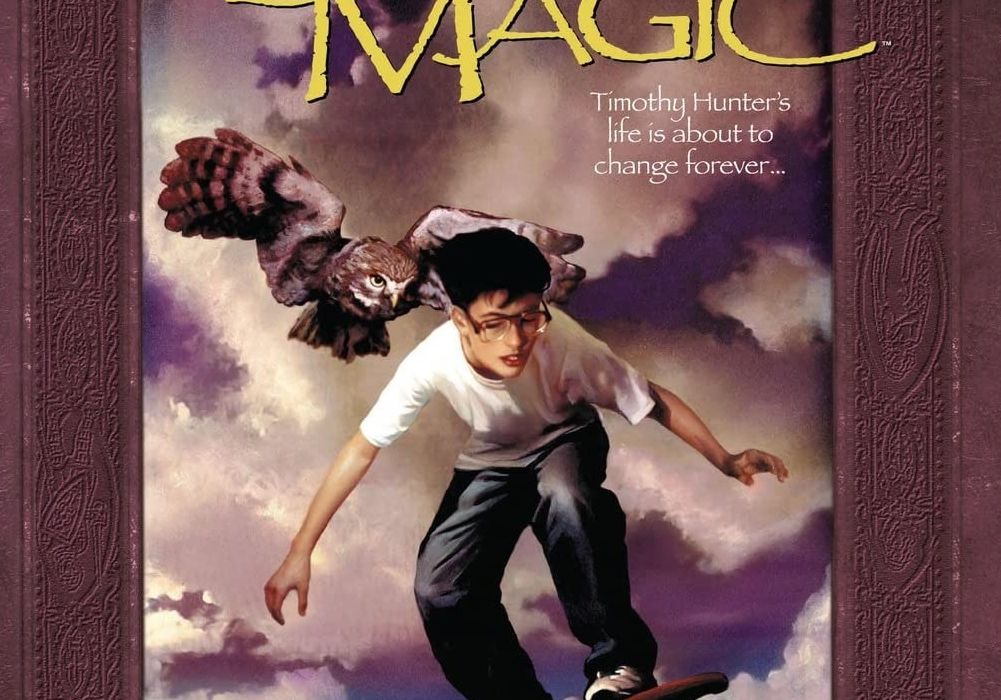Nearly every piece of writing about “The Books of Magic” seems to start by comparing it to Harry Potter. After all, the premise of “young bespectacled boy is told he is capable of magic” makes it an easy connection. This makes the comic a bit hard to sell for new readers, even though “The Books of Magic” was published years before readers were introduced to Hogwarts. Ironically, my reprinted collection of the comic even has advertisements for Harry Potter merchandise on the back cover. However, beyond that one-sentence description the two stories are completely different. Harry Potter embraced the magical world with all its joys and threats quickly, but in “The Books of Magic” the price of allowing sorcery in your life might be too high to begin with.
Written by Neil GaimanCover by John Bolton
Illustrated by John Bolton, Scott Hampton, Charles Vess and Paul Johnson
Lettered by Todd Klein
From Neil Gaiman comes a tale of the dangers and opportunities of youth, reprinted the original four-issue miniseries. Timothy Hunter could be the most powerful magician in the world, but does he really want to be? John Constantine, Phantom Stranger, Mister E, and Doctor Occult attempt to aid Timothy in choosing his path, but by the time Timothy makes a choice, it may already have been made for him.
12-year old Timothy Hunter is given a tour of the past, present and future of the magical side of the DC universe and other worlds existing beside it. After this he needs to make the decision to either embrace his potential as a wizard or reject it. The story is an introduction to both many classical myths and to the magical characters of the DC universe. Highlighting DC’s roster of sorcerers was actually the executive purpose behind the creation of this comic. However, the mysterious and nearly poetic way of storytelling keeps it so that an inexperienced reader will probably feel just as confused as Timothy on his journeys. This is not a “Who’s Who” explaining character histories despite it being structured like one. This isn’t an action adventure story, either. Mostly the characters just walk around meeting new people, but this is made captivating through an eloquent way of writing and four different styles of interesting artwork.
The art style of each issue has been chosen excellently to reflect the mood of the chapters. John Bolton’s art is grainy like an old photo and shady like a memory, which is appropriate for an issue dealing with the past. Scott Hampton’s watercolors are more grounded for the sequence set in the modern America, but still just eerie enough to remind us that we are dealing with the supernatural. The third issue illustrated by Charles Vess differs from the other three the most. The more defined lines and friendlier colors are reminiscent of old storybook illustrations, but just like old fairytales, there is a sinister edge to this Fairy Land too. The series is finished off by Paul Johnson, whose style is the most garish, befitting for the end of the world. In some panels this edginess does go a bit overboard, as Timothy’s face looks like a middle-aged man.
The backgrounds are often the most interesting part of the illustrations, except for Hampton’s issue where they are kept quite simple. The other three issues offer a wide variety of mixed techniques, layouts and perspectives. Bolton utilizes everything ranging from a Middle Ages wood carving style to photography and collages. In Hampton’s issue panels are cleverly tilted when Timothy is trapped inside the walking house of a witch, giving a shaking effect. At the end of time and space panel borders turn into a geometric jigsaw resembling three-dimensional shapes. However, there are some perspectives particularly in the first and last issues that are a bit wonky, probably not on purpose.
It would be an understatement to say that Neil Gaiman has a respectable background in writing fantasy. Here he displays a strong knowledge of the genre and of the DC universe by bringing in all the archetypes without making them cliché. The dialogue is often poetic but has moments of humor too. Timothy’s streetwise personality helps him get through his dangerous journey, but he also has very realistic moments of fear. John Constantine is entertaining as always, except for the minor running gag of him getting slapped by flight attendants he flirts with. The story is not Gaiman’s strongest one, but it definitely holds up as a whole. During its dullest parts, the story is just endless exposition, but during its best moments it reminds of the great power of imagination throughout the existence of humanity.
The ending seems happy, but is it really? Timothy seems to get the best of both worlds by rejecting the larger magical community and its dangers but still discovering his own magical powers. Throughout the comic, Timothy was told that magic has an extremely high price and is not worth it. “The Books of Magic” later became an ongoing series, but if you read only this original miniseries, Timothy’s future is left pretty much open. If Harry Potter had spent an entire series debating whether he should go to Hogwarts or not, that would have been a pretty catastrophic story. But in Timothy Hunter’s case, we don’t really know what he is going to use his magic for just yet, and that’s what makes this series plausible.







